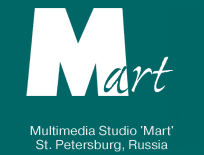How to talk about a picture

 Decades have passed since digital technology first entered our lives, and for the whole of this time the topic of “computers and art” has occupied a central place. Already today’s youth cannot remember the time when one of the symbols of the computer age was the Mona Lisa, produced on a sheet of paper by a printer in the form of an array of characters. The technology has become progressively more complicated with the appearance of personal computers, colour monitors and wider screens.
Decades have passed since digital technology first entered our lives, and for the whole of this time the topic of “computers and art” has occupied a central place. Already today’s youth cannot remember the time when one of the symbols of the computer age was the Mona Lisa, produced on a sheet of paper by a printer in the form of an array of characters. The technology has become progressively more complicated with the appearance of personal computers, colour monitors and wider screens.
For some time now many prominent museums have made use of scanners to make digital copies not only of reproductions but also of original masterpieces. But up to now the answer to the question “What is the relationship between a computer-generated image and the original artwork?” has not been obvious to all. “What result are we hoping to achieve by transferring a work of art to the computer?” – until we have a clear answer to this question, there can be no clear artistic role or direction for multi-media technology.
Firstly, it is clear that under no circumstances can a computer-generated image stand on the same level as original works of art. What we see on the screen cannot fully and faithfully correspond to the colours of the original, to its texture and the particularities of its artistic technique. It remains a mere reproduction, albeit of high quality – much higher than is possible with traditional methods. It is a substitute, intended for those who are unable to see the original picture. Why are electronic publications devoted to painting so popular? The reason is probably that a computer reproduction is a convenient model, with the aid of which one can study a work of art more easily. With the possibility of manipulating an image on the computer screen, one can look closely at details, investigate a picture’s composition, single out nuances and subtleties. When we listen to an expert guide in a museum sharing his knowledge of a picture with us – for example, Rembrandt’s Danae – we have to use our imagination to know what he is talking about. We are told that in the first version of the picture the arrangement of the figures against the background was quite different; subsequently the artist altered the composition, opening up a space for the golden radiance. But how can we see this first version, whose existence was confirmed by means of X-rays? We can only imagine how it looked. But we would wish not simply to take it on trust that this first version was quite different – we would wish to see it with our own eyes. Unfortunately, standing as we are before the canvas, this possibility is denied us; but with a computer screen before us, it is another matter altogether. The creators of the programme can illustrate all the various stages of the guide’s commentary with a series of reproductions following one another in logical succession. To illuminate the subject and composition they can make use of other digital reproductions in whole or in part. The possibilities for comparison and analysis of images on the screen are endless, enabling us to penetrate to the heart of the artist’s conception. The more familiar a specialist in this or that painting is with computer technology, the more effective this technology will be in allowing the creators of a multi-media album to reveal the secrets of the artist’s canvas.
One might conclude that multi-media technology has made it possible for scholarly and popular publishing to take a wholly new direction. France has traditionally been regarded as the world leader in this field, but Russian museums too have made efforts to present their collections in electronic form. This certainly applies to the Hermitage: one might mention such masterpieces as the Annunciation of van Eyck, Rembrandt’s Danae, or its famous Impressionist collection. There are also several publications devoted to Russian artists whose works are on display at the Russian Museum in St Petersburg, the Tretyakov Gallery in Moscow, and in other art museums of Russia.


